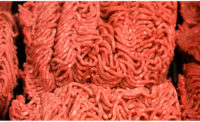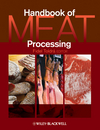Commentary | Fight for Food Safety
Spend now to save later

Margins in the food industry have always been thin. This is because retailers and other customers are continuously pushing food manufacturers and suppliers to lower costs. It’s no surprise that when it comes to allocating more money for food safety, there is often tension between food-safety professionals and the executive suite. Unfortunately, many food company owners and/or corporate officers see no apparent or direct return on investment for food-safety interventions.
Unless, of course, you are one of the hundreds of companies unexpectedly forced to recall their food products each year. It is then the advantages of prevention become clear. The story of Blue Bell provides a prime example of the benefits of investing more heavily in food safety.
Between 2010 and 2015, Blue Bell’s ice cream sickened 10 people and killed three. The Blue Bell facilities at issue were finding Listeria intermittently in the environment through routine testing. The company responded to those intermittent positives as most do: cleaning, sanitizing, retesting until the results were negative then resuming operations. The root cause in most cases was poor sanitation. What Blue Bell failed to do is to conduct a root source investigation to identify where in the facility the intermittent Listeria was coming from. Had the company spent $20,000 (or less) doing so, it would have averted a multi-million-dollar disaster.
In addition to the money the company paid to the sickened victims and their families, Blue Bell has been convicted of the criminal charges levied against the company and ordered to pay the federal government $19.35 million dollars in criminal fines and forfeitures. When announcing the sentencing, the U.S. Department of Justice (DOJ) announced it will not tolerate contaminated foods entering the marketplace. As explained by DOJ, “the sentence imposed today sends a clear message to food manufacturers that the Department of Justice will take appropriate actions when contaminated food products endanger consumers.”
Pathogens are elusive but not unbeatable. Whether companies are finding E. coli, antibiotic-resistant strains of Salmonella or Listeria in the food-processing environment, they should be responded to with urgency. In ready-to-eat foods, all pathogens are adulterants. In non-ready-to-eat, only some — although the U.S. Department of Agriculture (USDA) is increasingly pressuring companies to recall raw products contaminated with Salmonella when outbreaks occur. In addition, if one pathogen is resident, conditions are such that others could become resident as well. Regardless of the category of product, food companies owe it to themselves, their reputation and their consumers to proactively identify, detect and destroy any resident source of pathogens in their facilities.
Doing so will ensure a consistently safe product. So, yes, history teaches us that spending $20,000 today can save your company $20 million in the future. NP
Looking for a reprint of this article?
From high-res PDFs to custom plaques, order your copy today!










